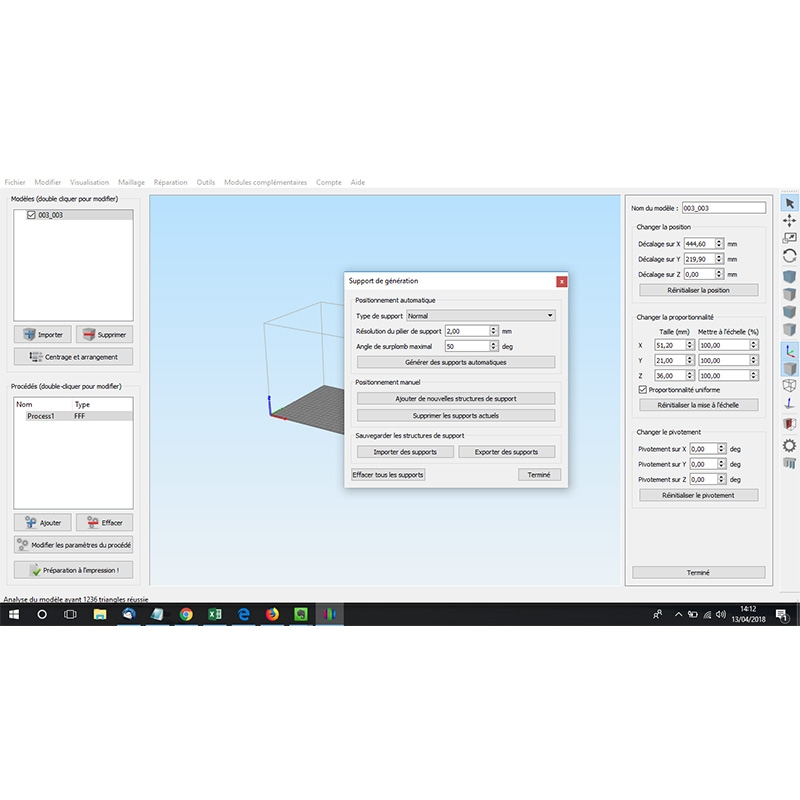
:max_bytes(150000):strip_icc()/Sherri-Johnson-FFF-Settings-569fbdfb3df78cafda9e11bb.jpg)
The nozzle will iron the top layer of each surface (the last layer of each flat area). The Ironing type All top surfaces is selected by default. You can now change the ironing settings for this model using the right panel. Tick Enable ironing, optionally you can also select the rest of the ironing settings in order to customize them for individual objects. Right-click on a model and select Add settings – Ironing from the context menu. If you want to turn on ironing just for a selected model, you have to be in expert mode. To turn Ironing on for all models on the build plate, select Print settings – Infill – Ironing – Enable Ironing. Ironing is not available in the Simple mode, so switch to the Advanced or Expert mode. We wouldn’t exactly call it a downside, but shiny surfaces will also become a bit more matte. The ironing toolpath is planned for a small extrusion, but the nozzle is physically still the same size, so some plastic will bleed over the edge. The risk is increased during summer heatwaves.Īnother downside is that the edges will be a tiny bit fuzzy or less sharp. This might a problem mainly when printing with PLA, because of its low-temperature resistance. If you’re ironing a big surface area, on some machines you might experience heat creep and eventually, a clogged hotend because the extrusion is very small and slow during ironing. However, for prints just a few millimeters tall, Ironing can increase the print quite significantly. You can see how much print time will be spent on ironing in the preview.įor uniformly sized objects (roughly cube shape) Ironing will increase the print time by about 10-20%. The main downside is increased print time as the second phase of top infill is performed with very small spacing between ironing lines. Original Prusa profiles have the Monotonic infill already set as the default for top&bottom layers. Use it in combination with Ironing to get the best results. It’s essentially the good old rectilinear infill with modified path planning – it’s always extruded only in one direction (e.g. The Monotonic infill is another feature, which improves the quality of the top layers. Use in combination with the Monotonic infill The bottom layer printed on the build plate will typically be even smoother than an ironed top layer (depending on the print sheet that you use). Ironing has little to no effect on non-flat surfaces, Ironing Off (left), Ironing On (right)ĭon’t forget, that some models can be printed upside down. It will just unnecessarily increase the print time. With that said, ironing will not have a significant negative impact when printing such models. It’s also not useful for objects which do have flat areas, but these flat areas are not aligned parallel to the print bed. Ironing is not useful for round objects, figures and organic shapes in general. It can also be useful when you want to glue two pieces together and need the surfaces to be as flat as possible so that the gap between them is minimized.

Ironing is useful for prints with flat top surfaces, like nameplates, logos, badges, boxes, lids, etc. For PrusaSlicer, we implemented Neotko’s “Neosanding” at 45 degrees as in Kisslicer. Kisslicer integrated Ironing with a small twist: The second phase is not perpendicular to the first phase, but at 45 degrees, which Jonathan, the author of Kisslicer, validated to produce better results. The “Neosanding” was later integrated by Ultimaker into their Cura slicer. Neotko prototyped “Neosanding” – a smoothing of top surfaces in Simplif圓D by running a second infill phase at the same print height with zero or a tiny extrusion rate perpendicularly to the first infill run. The Ironing idea was first proposed in 2016 by the Spanish user “Neotko” on the Ultimaker community forum. You will not find ironing in the previous versions of PrusaSlicer. At the time of the release of this article, PrusaSlicer 2.3 is available as a release candidate version.


 0 kommentar(er)
0 kommentar(er)
